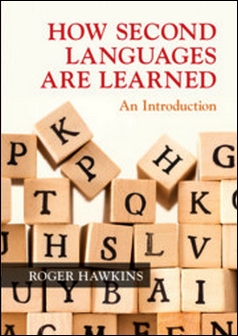書籍分類

How Second Languages are Learned: An Introduction
作者:Roger Hawkins
原價:NT$ 1,000
ISBN:9781108468435
版次:1
年份:2019
出版商:Cambridge University
參考網頁:How Second Languages are Learned: An Introduction
版次:1
年份:2019
出版商:Cambridge University
參考網頁:How Second Languages are Learned: An Introduction
內容介紹 作者介紹
- Description
- Provides teachers with a ready-made set of discussion topics that encourage students to generate their own ideas
- Includes 'in a nutshell' summaries of chapter sections which enable students to prepare material for essay assignments or revise for exams
- This book is reader-friendly and it encourages students to engage with the primary research literature with confidence
A comprehensive introduction to how people learn second languages (L2s), this textbook approaches the topic through five problems the L2 learner has to solve: 'breaking into' the L2; associating forms with meanings; learning sentence structure; learning phrasal and sentential meaning; and learning the use of the L2 in context. These problems are linked throughout to the L2 acquisition of lexis, morphology, syntax, semantics, phonetics/phonology and language-use in a reader-friendly way, using key studies to build a comprehensive picture of how L2s are learned. 'In a nutshell' summaries of chapter sections provide helpful signposts to the developing argument, whilst end-of-chapter activities encourage the reader to reflect on the ideas presented, analyse data and think creatively about the problems encountered. The roles of innate knowledge, input, and the age at which learning starts are also considered. This essential textbook will enable students to think objectively about language, and will be an asset to any introductory course on second language acquisition.
分類位置:
ELT > ELT > Teaching Resources


